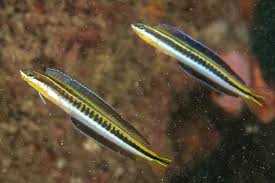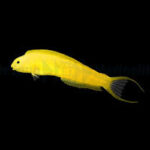Types of Dragons in Chinese Mythology: Lóng, Qing Long, and Huang Long

In Chinese mythology, dragons are revered as divine and powerful creatures that embody strength, wisdom, and cosmic forces. Unlike the malevolent dragons of Western traditions, Chinese dragons are considered benevolent, often associated with auspicious qualities such as good fortune, prosperity, and protection. The Chinese dragon is not a single entity but rather a diverse collection of dragon types, each with its own characteristics and symbolic significance. Among the most notable types of dragons in Chinese mythology are the Lóng (龙/龍), the Qīng Lóng (青龙), and the Huáng Lóng (黄龙). In this article, we explore these three prominent dragon types, their symbolism, and their roles in Chinese culture and mythology.
The Lóng (龙/龍) – The Universal Dragon
The term “Lóng” is the most general and widely used term for a dragon in Chinese mythology. It refers to the iconic, celestial dragon that symbolizes strength, power, and good fortune. Lóng dragons are often seen as a synthesis of various animal features, with the body of a serpent, the head of a camel, the antlers of a deer, the claws of an eagle, and the scales of a fish. This unique combination of traits gives the Lóng dragon its mystical, omnipotent qualities, which allow it to move freely between the heavens, the earth, and the seas.
Symbolism of the Lóng Dragon
The Lóng dragon holds immense cultural significance in China, symbolizing imperial power, strength, and prosperity. Historically, the dragon was associated with the emperor, who was often referred to as the “Son of the Dragon.” This title signified the emperor’s divine right to rule and his connection to the celestial forces. The Lóng was seen as a protective entity that watched over the emperor and his reign, ensuring the stability and flourishing of the empire.
In Chinese cosmology, the Lóng dragon is also associated with the forces of nature, particularly water. It controls the movement of rivers, seas, and rain, ensuring the fertility of the land and the prosperity of the people. The Lóng’s control over water connects it to the cycles of life, death, and renewal, reinforcing its role as a symbol of harmony between the natural and supernatural realms.
Lóng dragons are often depicted as wise and benevolent beings, capable of bestowing good fortune and blessings upon individuals and communities. Their association with water and rain also ties them to agriculture, as they are believed to bring much-needed rainfall to sustain crops and promote growth.
The Lóng in Chinese Art and Culture
In Chinese art, the Lóng is a frequent motif, especially in imperial artifacts and architecture. The dragon appears in a variety of forms, from the majestic, coiling serpent to the more abstract, swirling shapes that symbolize the flow of cosmic energy. In architecture, the Lóng can be seen adorning the roofs of temples, palaces, and imperial buildings, serving as a protective symbol against evil spirits and misfortune.
The Lóng is also depicted in Chinese festivals, particularly during the Dragon Boat Festival (端午节), where dragon-shaped boats are raced in honor of the legendary poet Qu Yuan. The dragon is believed to bring protection and good fortune, which is why it is a central element in many cultural and religious celebrations.
Qīng Lóng (青龙) – The Azure Dragon
The Qīng Lóng (青龙), or Azure Dragon, is one of the Four Symbols (四象) in Chinese mythology, representing the eastern direction. As a key figure in Chinese cosmology, the Qīng Lóng is associated with the spring season, growth, and renewal. It is often depicted as a green or blue dragon, emphasizing its connection to the elements of wood and nature.
Symbolism of the Qīng Lóng
The Qīng Lóng is closely tied to the forces of nature, particularly the concept of life and renewal. As the guardian of the east, it is considered the bringer of the spring season, when new life begins to emerge, and nature is reborn. The dragon’s association with the east also links it to the rising sun, symbolizing the beginning of a new cycle of life.
The color green or blue, often used to describe the Qīng Lóng, is indicative of the energy of growth, fertility, and vitality. In traditional Chinese medicine and philosophy, the element of wood represents the energy of growth and development, which aligns with the qualities of the Azure Dragon. This dragon is often seen as a symbol of strength, vitality, and endurance, as it possesses the power to nurture and protect life.
In Chinese mythology, the Qīng Lóng is often depicted as a protector, guarding the land from natural disasters and malevolent forces. As a symbol of the east, it is also connected with the virtues of benevolence, righteousness, and justice, embodying the qualities of a noble and honorable guardian.
The Qīng Lóng in Chinese Culture
The Qīng Lóng plays a central role in many cultural practices and religious ceremonies. In Taoist traditions, it is believed that the Azure Dragon has the power to dispel evil spirits and bring about harmony and balance. It is often invoked in rituals and prayers to ensure prosperity and the protection of the community.
In Chinese art, the Qīng Lóng is depicted as a majestic, coiled dragon, often with its body twisting through clouds or flames. The color blue or green is used to symbolize its connection to the forces of nature, and its form is graceful yet powerful, conveying the dragon’s ability to control the elements and bring about positive change.
The Qīng Lóng is also associated with various festivals, especially those celebrating the arrival of spring. During these festivals, the Azure Dragon is honored as a symbol of rebirth, new beginnings, and the rejuvenation of nature.
Huáng Lóng (黄龙) – The Yellow Dragon
The Huáng Lóng (黄龙), or Yellow Dragon, is another significant type of dragon in Chinese mythology. It is most famously associated with the creation of the Chinese imperial system and holds an important place in Chinese cultural history. The Yellow Dragon is often regarded as a symbol of imperial authority, wisdom, and divine rule.
Symbolism of the Huáng Lóng
The Huáng Lóng is closely associated with the emperor and the imperial family. In ancient Chinese lore, the appearance of the Yellow Dragon was considered a divine omen, signifying the rise of a new ruler or the restoration of the imperial mandate. The color yellow itself is highly significant in Chinese culture, as it is the color of the emperor and represents the earth element in the Five Elements theory. The Yellow Dragon, therefore, embodies the divine power and authority of the emperor and is a symbol of the ruler’s connection to the heavens.
The Huáng Lóng is also connected to the concept of creation and transformation. In some myths, the Yellow Dragon is said to have emerged from the depths of the earth, bringing order to the chaos of the world. This creation story emphasizes the dragon’s role as a bringer of harmony, balance, and order in the world.
In addition to its connection with imperial rule, the Huáng Lóng is seen as a protector of the land and its people. It is believed to have the power to ward off evil spirits and ensure the prosperity of the nation. As a symbol of divine protection, the Yellow Dragon is often invoked in rituals and ceremonies to ensure the safety and well-being of the people.
The Huáng Lóng in Chinese Culture
The Yellow Dragon holds a special place in Chinese culture, particularly in the context of the imperial system. Throughout history, the appearance of a Yellow Dragon was seen as a sign of a legitimate emperor and was often interpreted as a divine sign that the emperor had the Mandate of Heaven. This connection to the emperor and the imperial family elevated the status of the Huáng Lóng as a symbol of supreme authority and cosmic power.
In art, the Yellow Dragon is depicted as a majestic, regal creature, often coiled around a pearl or sphere, symbolizing its connection to divine wisdom and knowledge. It is sometimes shown emerging from the earth or rising from the sea, signifying its role in the creation and transformation of the world. Its golden hue represents its link to the earth element and the imperial power it embodies.
The Yellow Dragon is also an important figure in Chinese folklore, where it is often invoked during important events such as imperial coronations or the establishment of new dynasties. It is believed that the appearance of the Huáng Lóng during these times signals the beginning of a prosperous and harmonious era.
Conclusion
The Lóng, Qīng Lóng, and Huáng Lóng are three distinct yet interconnected types of dragons in Chinese mythology, each representing different aspects of Chinese cosmology, culture, and spiritual beliefs. The Lóng is a universal symbol of power, strength, and good fortune, while the Qīng Lóng represents the forces of nature, renewal, and growth. The Huáng Lóng, with its association with imperial rule and divine authority, embodies wisdom, protection, and cosmic order.
Together, these dragons play a central role in Chinese mythology and culture, embodying the harmony between the natural world, the spiritual realm, and the imperial authority that governed ancient China. Whether as symbols of protection, wisdom, or creation, these dragons continue to captivate the imagination and inspire reverence in Chinese society and beyond.

